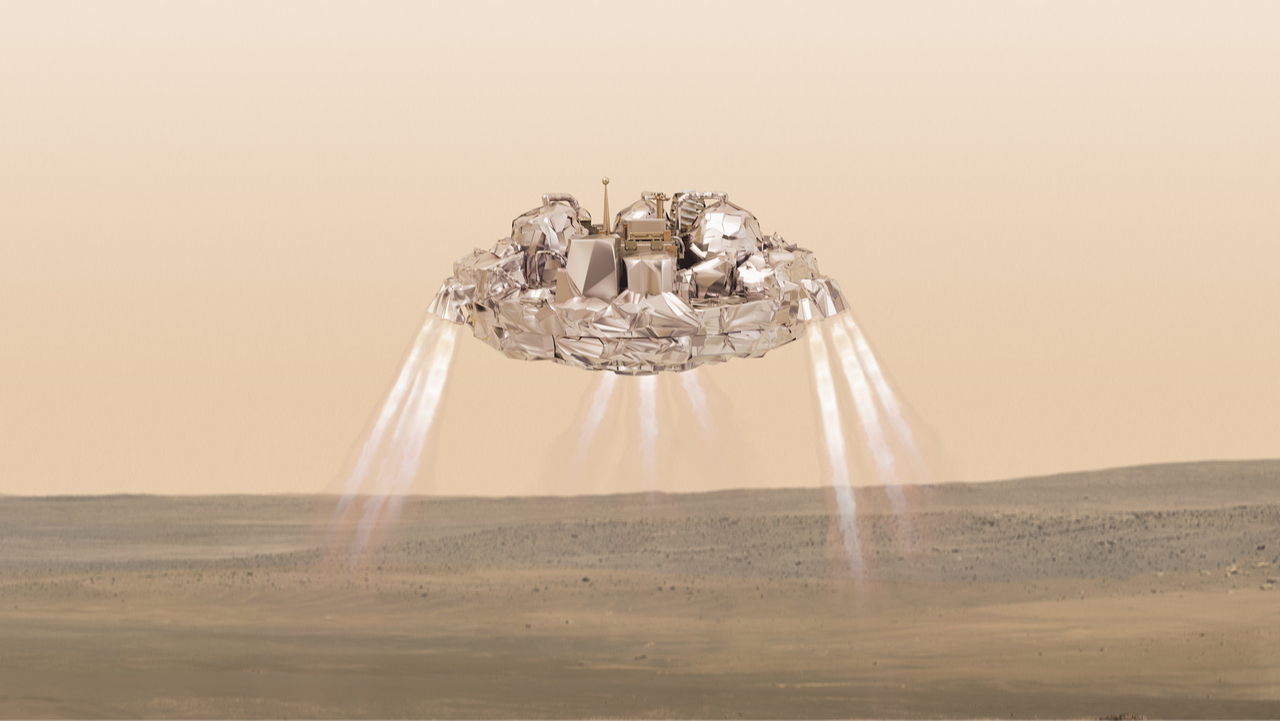
Spaceflight history will be made today (Oct. 19), if all goes according to plan.
The Schiaparelli lander — part of the European-Russian ExoMars 2016 mission — is scheduled to touch down on the Martian surface this morning at 10:48 a.m. EDT (1448 GMT). You can follow the action live here at Space.com, courtesy of the European Space Agency (ESA).
If Schiaparelli performs as expected, today's landing will mark the start of the first fully successful Red Planet surface mission for Europe and Russia. In fact, it will be the first such success for any entity other than NASA. [Europe's ExoMars 2016 Landing: Complete Coverage]

Russia's forerunner state, the now-defunct Soviet Union, pulled off the first-ever soft landing on the Red Planet with its Mars 3 probe back in 1971. But Mars 3 managed to beam home just one indecipherable image before going silent less than 20 seconds after touchdown.
To date, ESA has attempted only one Mars landing, that of the Beagle 2 probe in December 2003. Beagle 2 stopped communicating with its handlers shortly after separating from its mothership, the Mars Express orbiter, and was never heard from again.
Beagle 2's fate remained a complete mystery until January 2015, when researchers announced that they had spotted the lander in images captured by NASA's Mars Reconnaissance Orbiter (MRO). These photos suggested that Beagle 2 had successfully landed on the Red Planet but failed to deploy all of its solar panels. [The Best (and Worst) Mars Landings of All Time]
NASA first landed on Mars with the agency's Viking 1 and Viking 2 landers in 1976. The American space agency waited two decades before trying its next Red Planet surface mission, which was also successful: The Pathfinder lander and accompanying Sojourner rover operated as planned after touching down in 1997.
Get the Space.com Newsletter
Breaking space news, the latest updates on rocket launches, skywatching events and more!
NASA's next surface effort, the Mars Polar Lander, failed in 1999, but the agency has been on a Red Planet hot streak ever since. The Spirit and Opportunity rovers touched down on planned three-month missions in January 2004, then kept rolling for years afterward; Opportunity, in fact, is operational to this day.
NASA's Phoenix lander found strong evidence of buried water ice near the Martian north pole shortly after touching down in May 2008, and the agency's car-size Curiosity rover has been exploring the Red Planet since August 2012. Curiosity discovered that the area near its landing site hosted a long-lived lake-and-stream system billions of years ago, suggesting that Mars could have supported Earth-like life in the ancient past. The rover is now climbing the foothills of the 3.4-mile-high (5.5 kilometers) Mount Sharp, searching for clues about when and how Mars became the cold and dry world it is today.
Schiaparelli won't be nearly as long-lived as Curiosity, Spirit or Opportunity, even if everything goes perfectly today and in the near future. The lander is a demonstrator that aims to prove out the technology needed to get the life-hunting ExoMars rover down on Mars in 2021. (The rover mission, which is slated to launch in 2020, is the second phase of the two-part ExoMars program.) Schiaparelli carries nonrechargeable batteries that will allow the lander to operate for a maximum of eight days on the Martian surface, ESA officials have said.
Schiaparelli's landing attempt isn't the only spaceflight action on tap today. The ExoMars Trace Gas Orbiter (TGO), which launched toward Mars with Schiaparelli this past March, will fire its main engine for more than two hours this morning beginning at 9:04 a.m. EDT (1304 GMT) in a crucial orbit-insertion burn. If anything goes seriously wrong with this maneuver, TGO will sail right past the Red Planet.
If the burn succeeds, TGO will then take its time getting to its final orbit. The orbiter will start sniffing the Martian atmosphere for methane and other potential signs of life in March 2018. This work will last for nearly two years, ESA officials have said. TGO will also be used to relay communications from the ExoMars rover to mission control on Earth through the end of 2022.
ESA leads the ExoMars program; Russia's space agency, known as Roscosmos, serves as the main partner.
Follow Mike Wall on Twitter @michaeldwall and Google+. Follow us @Spacedotcom, Facebook or Google+. Originally published on Space.com.
Join our Space Forums to keep talking space on the latest missions, night sky and more! And if you have a news tip, correction or comment, let us know at: community@space.com.

Michael Wall is a Senior Space Writer with Space.com and joined the team in 2010. He primarily covers exoplanets, spaceflight and military space, but has been known to dabble in the space art beat. His book about the search for alien life, "Out There," was published on Nov. 13, 2018. Before becoming a science writer, Michael worked as a herpetologist and wildlife biologist. He has a Ph.D. in evolutionary biology from the University of Sydney, Australia, a bachelor's degree from the University of Arizona, and a graduate certificate in science writing from the University of California, Santa Cruz. To find out what his latest project is, you can follow Michael on Twitter.